How does this sound?
A business improvement tool that:
- Works across the entire organization
- Never gets outdated
- Helps you spot shortcomings with ease
Too good to be true, you say?
Well, it’s not. This tool does exist — and it’s called “gap analysis.”
Whether you want to improve a business process, refine your strategy, or find a need in the market you aren’t currently fulfilling — a gap analysis could be just what the doctor ordered.In this quick guide, we’ll show you everything you need to know to perform your first gap analysis — including every requirement of the process.
Let’s start with the basics.
First things first: what’s a gap analysis?
Put simply, a gap analysis compares actual results with predicted results. This allows organizations to easily figure out if they’re on track to achieve their goals — and if not, they can quickly spot how to get back on the right path.
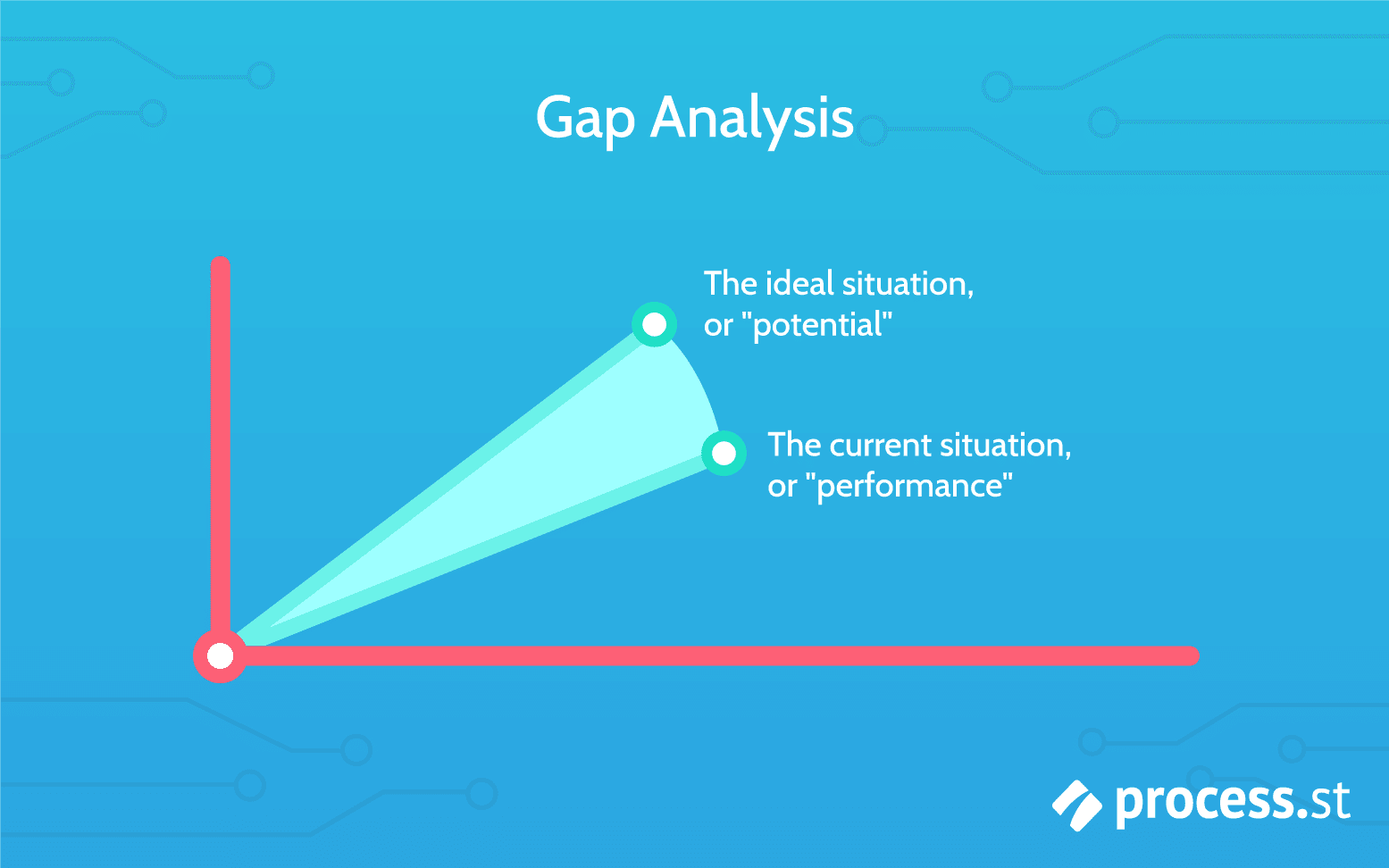
It’s a great way to fill any gaps, so to speak. As a result, it allows businesses to improve their processes, structures, skills, technologies… the list goes on.
In simple terms, a gap analysis is used to identify any improvements that need to happen to ensure company goals are met.
What are the types of gap analysis?
There’s more than one way to perform a gap analysis. But don’t fret — we’ve broken it down here to give you a simple overview of each method.
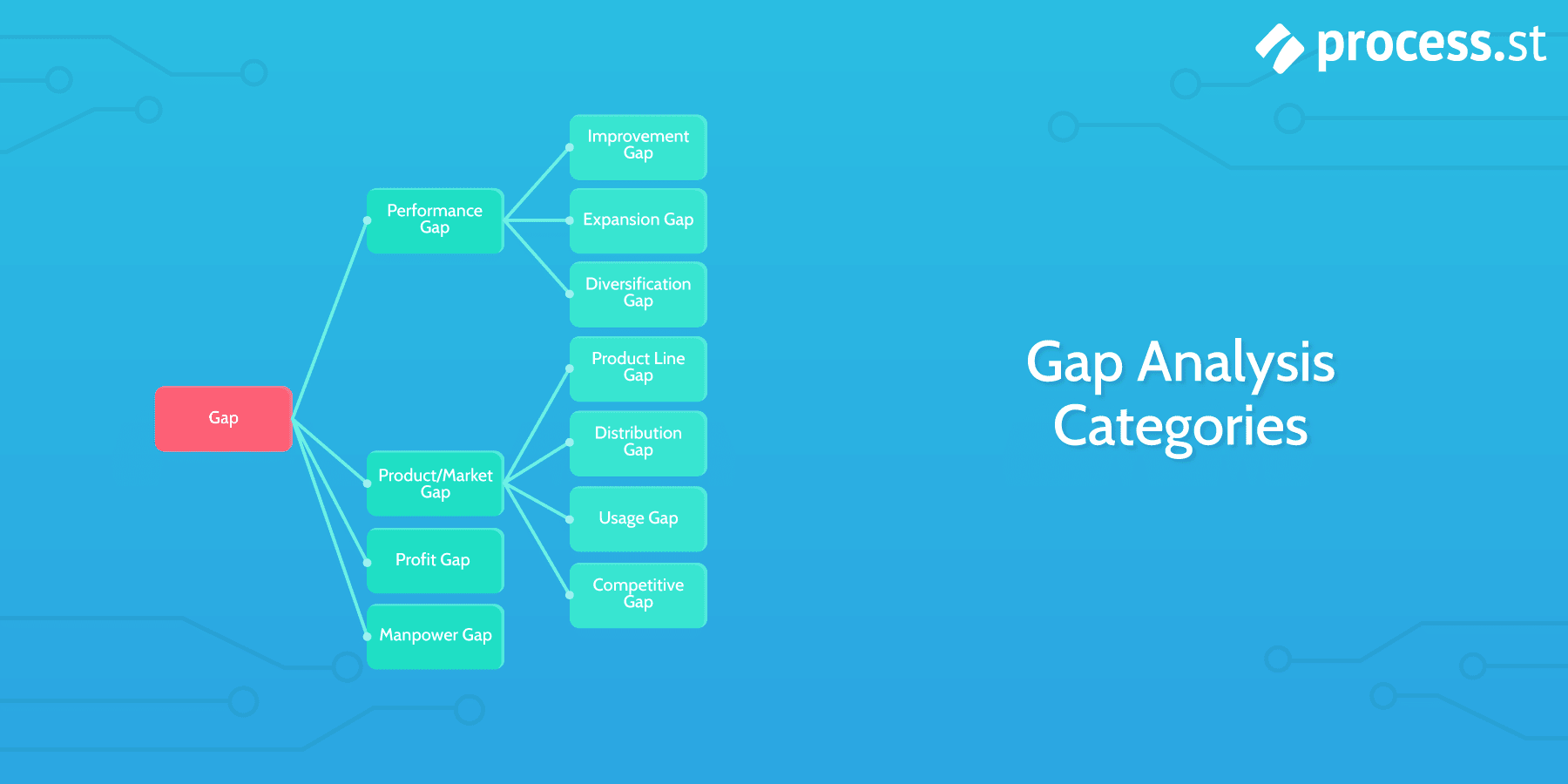
#1. Performance (or strategy) gap analysis: Actual performance vs. expected performance
This is probably the most well-known interpretation of gap analysis.
Performance gap analysis is the top-level analysis of general company goals or objectives.
This means looking at which goals have been achieved — otherwise known as current performance — and what needs to happen to reach the future goal.
It’s also referred to as “strategy gap analysis”, which refers to the differences between the company mission and strategic objectives. In this context, the gap represents any threat to the company’s growth rate, future KPIs, and, ultimately, their success as a business.
In a lot of ways, this is similar to a SWOT analysis (one of several marketing models) — and in fact, a SWOT analysis can be a pretty helpful gap analysis tool. Especially when it comes to strategy planning.
Using a SWOT analysis allows businesses to identify their own strengths and weaknesses, finding the root cause of any performance gaps in the current workflow.
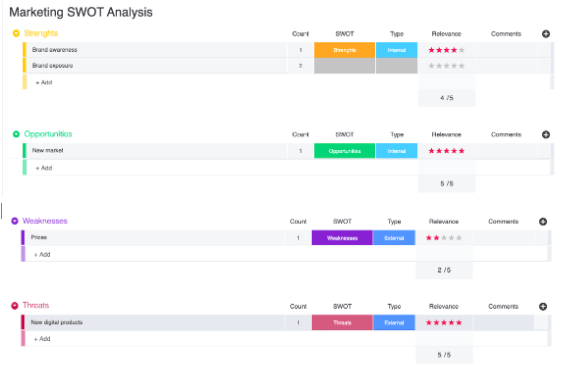
#2. Product (or market) gap analysis: Actual vs. budgeted sales
Product gap analysis is the process of identifying areas where demand is greater than supply.
This is a great way for businesses to capitalize on under-serviced markets, and to spot those products or services that are in demand but not available.
By performing product/market gap analysis, organizations make informed business decisions about where to invest their time and money.
But this sounds really similar to market research. What’s the difference?
Good question.
Market research is typically conducted as the result of a business need. It’s reactive.
Market gap analysis, however, is done proactively. It helps businesses keep one step ahead of the game in the marketplace, making sure that the organization can withstand any unexpected changes.
#3. Profit gap analysis: Actual vs. target profit
Profit gap analysis identifies why profit forecasts haven’t been met, and what went wrong along the way.
Shifting market trends and macro factors — such as new competitors, or political and societal changes — can all have a knock-on effect when it comes to profit.
Using profit gap analysis allows businesses to identify what’s happening around them, and what needs to change to keep the business profitable. It helps businesses reach their desired outcome — business growth.
#4. HR gap analysis: Number/performance of workforce vs. the work required
It’s all well and good performing a gap analysis, but what happens if you don’t have the resources or capacity to do the work that’s needed?
That’s where HR gap analysis can help.
HR gap analysis is the process of analyzing the capacity and size of your team in order to make decisions about budgeting and staffing.
And as a result, companies have the required intel to make decisions about hiring, outsourcing, and any skills gap within their current workforce.
Once the analysis has been complete, companies have a clear overview of their workforce competencies and how this fares in relation to the future goals and company objectives.
How do you perform a gap analysis?
Now that you understand what a gap analysis is, let’s show you how to perform one in your organization.
We’ll keep it short, sweet, and to the point.
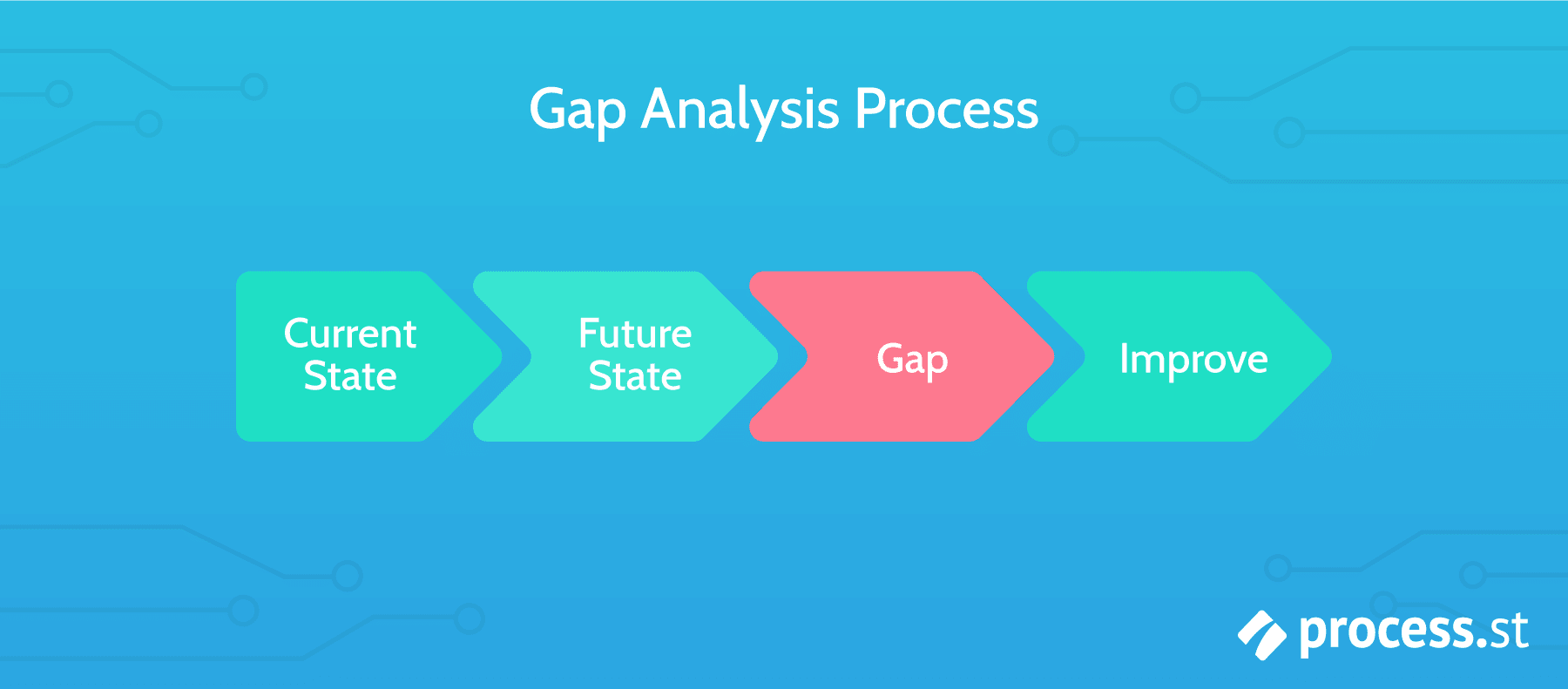
#1. Describe the focus area of analysis
Before you do anything else, you need to identify the area in which the gap analysis will take place. A simple but important part of the process.
Whether that’s a specific project — or a particular area of work — make sure that you’re clear on exactly what you’re going to analyze before you go any further. Without this clarity, it’ll be hard to pinpoint the gaps you want to address.
For example, let’s say you want to improve the content on your company website. First thing’s first, you’ll need to identify “content” as the area of analysis before proceeding to conduct a full content gap analysis.
#2. Determine the goals
Ask yourself the following question:
If everything went smoothly and according to plan, where would you be?
By establishing the goals that you want to achieve, you can identify the improvements needed to reach them.
For example, you might be looking to achieve a certain amount of profit throughout the next quarter. So your goal will be to increase profit and identify how you’re going to make that happen.
By identifying your goals, you’re giving yourself a benchmark for the future gap analysis.
Top tip from monday.com: Be realistic when it comes to setting goals. The last thing you want is an unreachable goal — that’s no fun for anyone. Check out our blog ‘Effective project objectives: how to define (and achieve) success’ to find out how to set SMART goals and objectives.
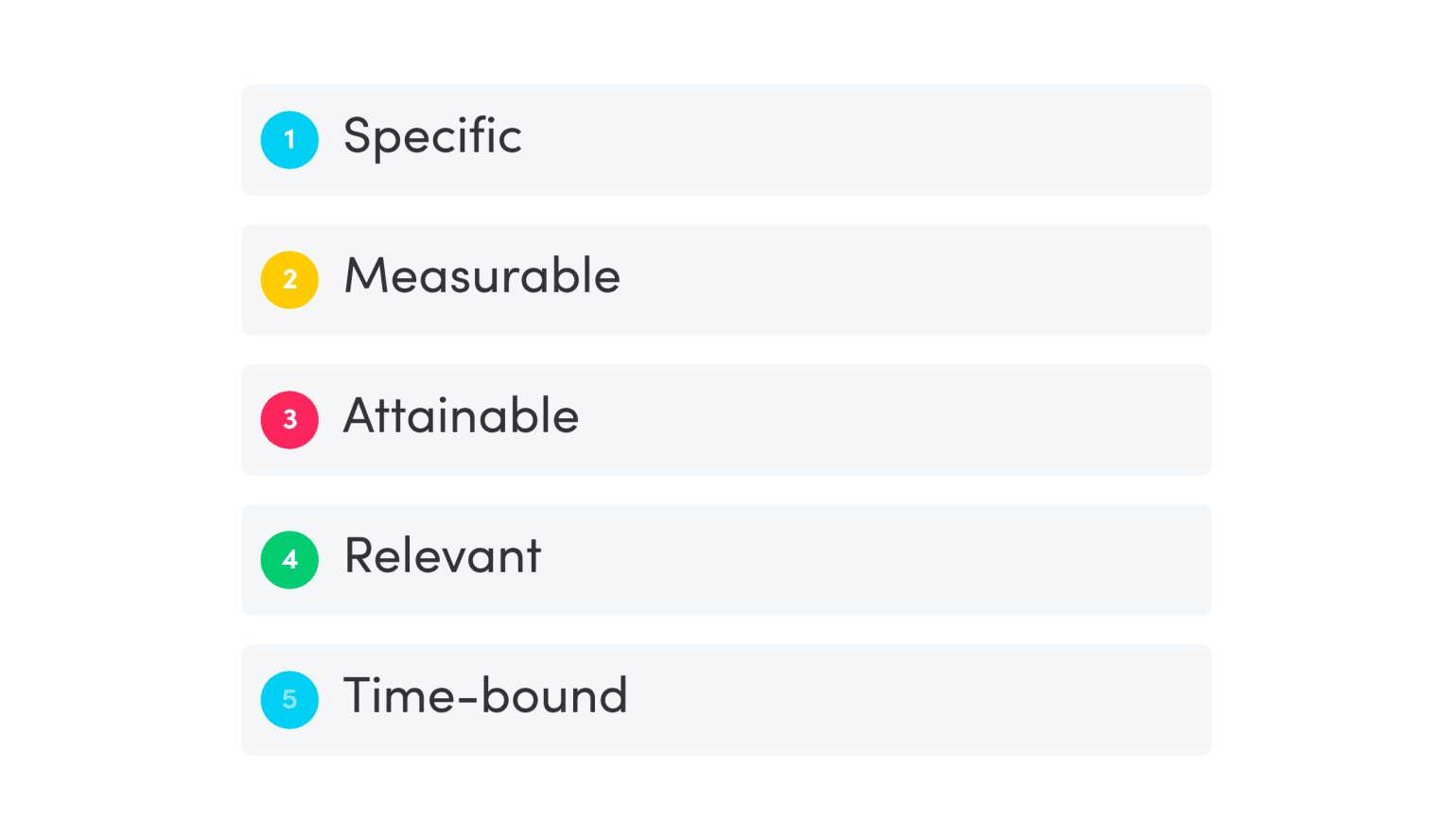
#3. Analyze the current state
Now that you’ve taken a look at the desired future state of your company, it’s time to bring it back to the present.
Spend some time reviewing and analyzing your current situation. This will help you identify any areas of improvement that could help you achieve your goals.
Reviewing where you currently are will allow you to identify how to get where you want to be — which leads us nicely onto our next step.
#4. Compare what you have now with what you want to achieve
Time to compare the current state with the ideal state.
This involves reviewing how far you are from the actual target. In doing so, you’ll be able to spot the gaps and areas of improvement.
And voilà – there’s your gap analysis. You’re able to figure out why you didn’t meet your target. As a result, you can avoid the same problems in the future.
So what should you do with all this information?
#5. Create an action plan
The final stage involves putting everything you’ve learned so far into an official gap analysis.
So what should your gap analysis look like?
Here’s an example:
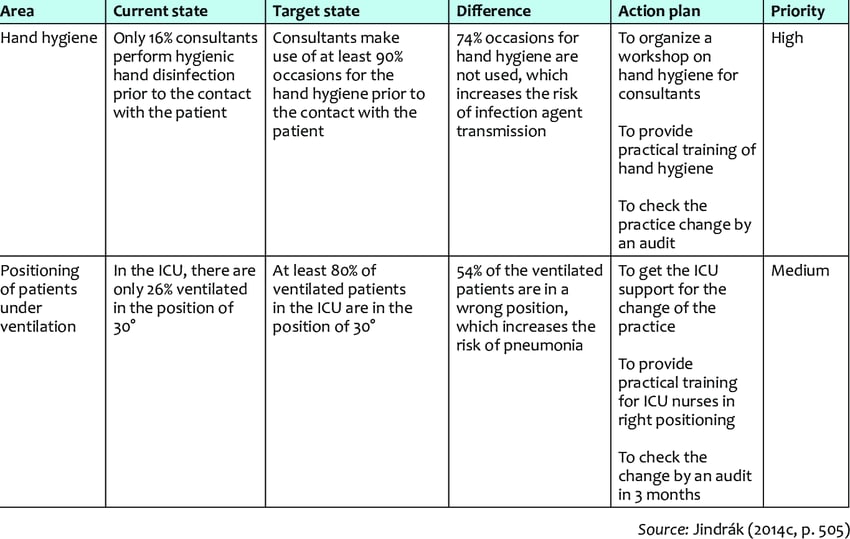
Or — if you want to make the process easier and more intuitive — you might want to think about using work management software, like monday.com.
Our software makes the entire gap analysis much more efficient, streamlined, and — let’s face it — easier. And we don’t want to brag, but we even have a pre-made gap analysis template ready for you to use.
Okay, so maybe we do want to brag. But only because we know our software will make your life easier.
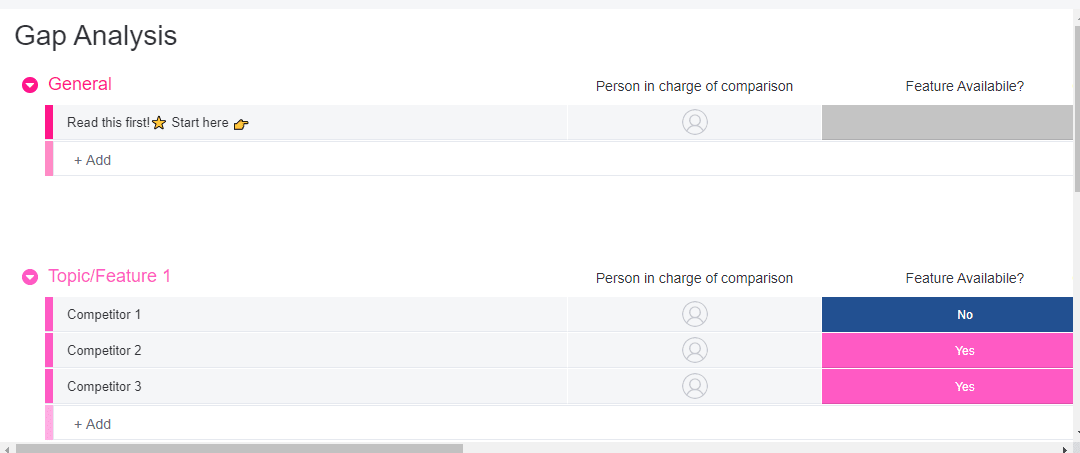
Using monday.com for your next gap analysis
There are two ways to perform a gap analysis: the hard way and the simple way.
The hard way is to do it manually.
The simple way is to do it with work management software.
Using a work management platform like monday.com not only improves the gap analysis process, but it makes it easier to tweak if needs be.
Our platform is super intuitive and easy to use, making it ideal for organizations that are looking for quick, fast, and efficient ways to make changes to their current processes.
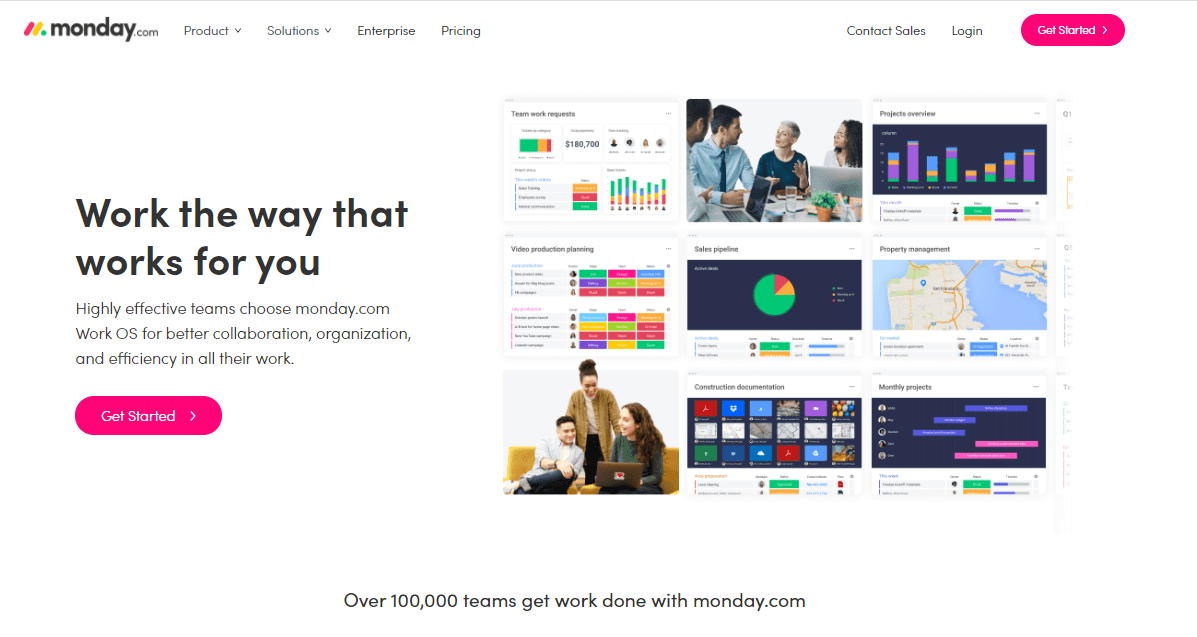
Sounds ideal, right? We think so. But if you still need convincing, let’s look into it in more detail.
Why monday.com?
So why should you bother using monday.com? And how can it improve the gap analysis process?
Both very good questions — and we’ve got the answers you’re looking for
Let’s take a look at some of the features and benefits that monday.com provides, and how we can help you streamline your next gap analysis:
#1. Automate your processes
With monday.com, automation is a piece of cake. We want our platform to cater to your needs, so automation has always been something that we’ve encouraged our users to do.
Whether that’s using one of our pre-made automations — or creating your own as part of your gap analysis process — our automations make your life easier, and your workflow more efficient.
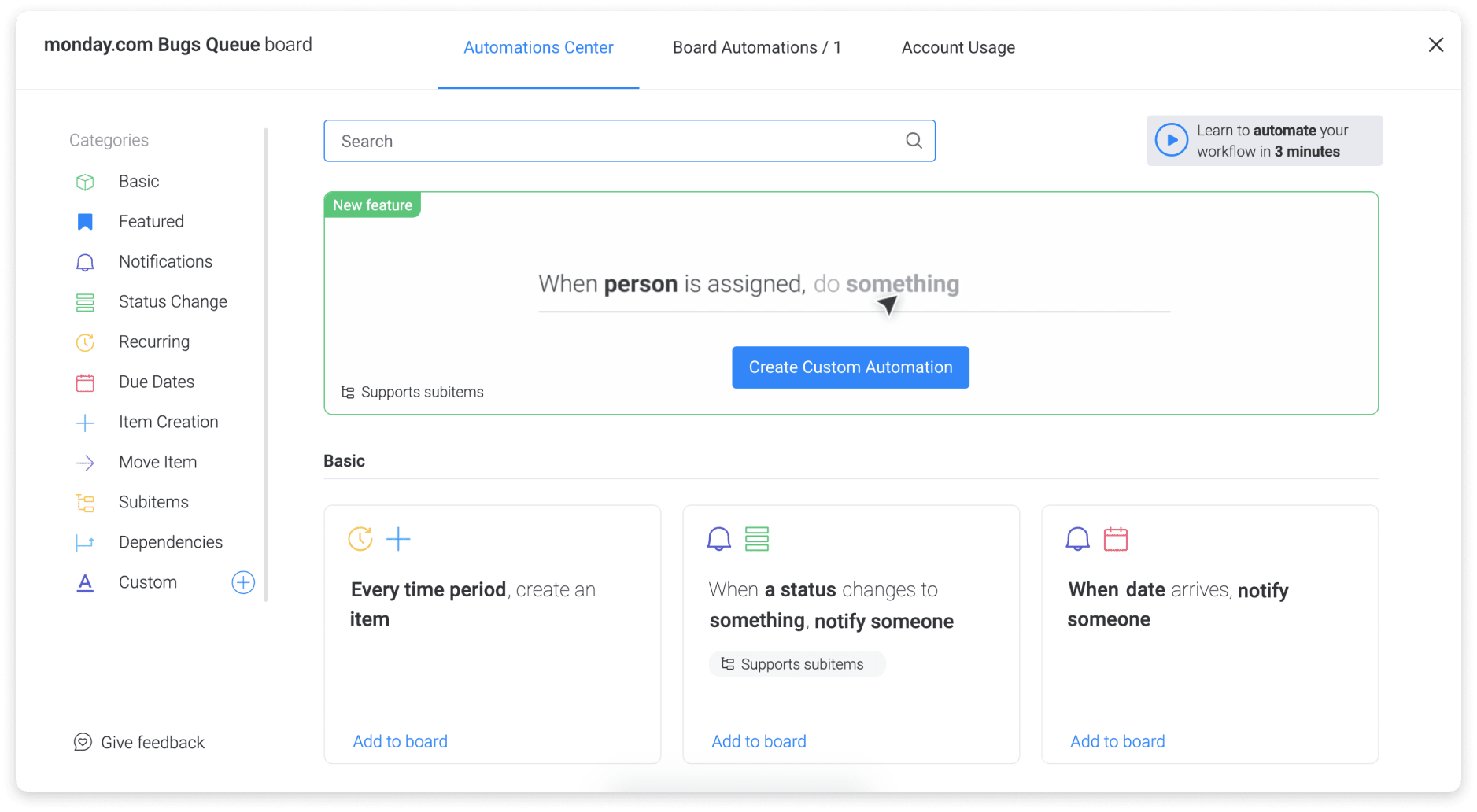
Pretty handy when you’re trying to conduct a gap analysis. No need to worry about manually having to check in on how things are progressing in relation to your targets. Simply set up an automation to alert you of any changes, and Bob’s your uncle.
#2. Collaborate with your team
Our software is built with collaboration in mind. We want to make it as easy as possible for teams to communicate and work together.
So if you need to work with someone else in your team on a gap analysis, monday.com is the perfect platform to collaborate. Whether that’s sharing files, adding comments to tasks, or creating documents — we’ve got you covered.
#3. Integrate your favorite tools
Already working with a variety of platforms? Great! At monday.com, our platform is integration-friendly.
In fact, our software integrates with over 40 third-party platforms — including Zapier, which means you have access to all of their integrations too.
So whether you’re using Slack for instant communication, Google Drive to store your files, or Shopify to host your website — with monday.com, external platforms seamlessly integrate into your workflow.
It’s perfect if you’re already using different systems but want to integrate them all in one place to conduct your next gap analysis. Or even to create a gap analysis report!
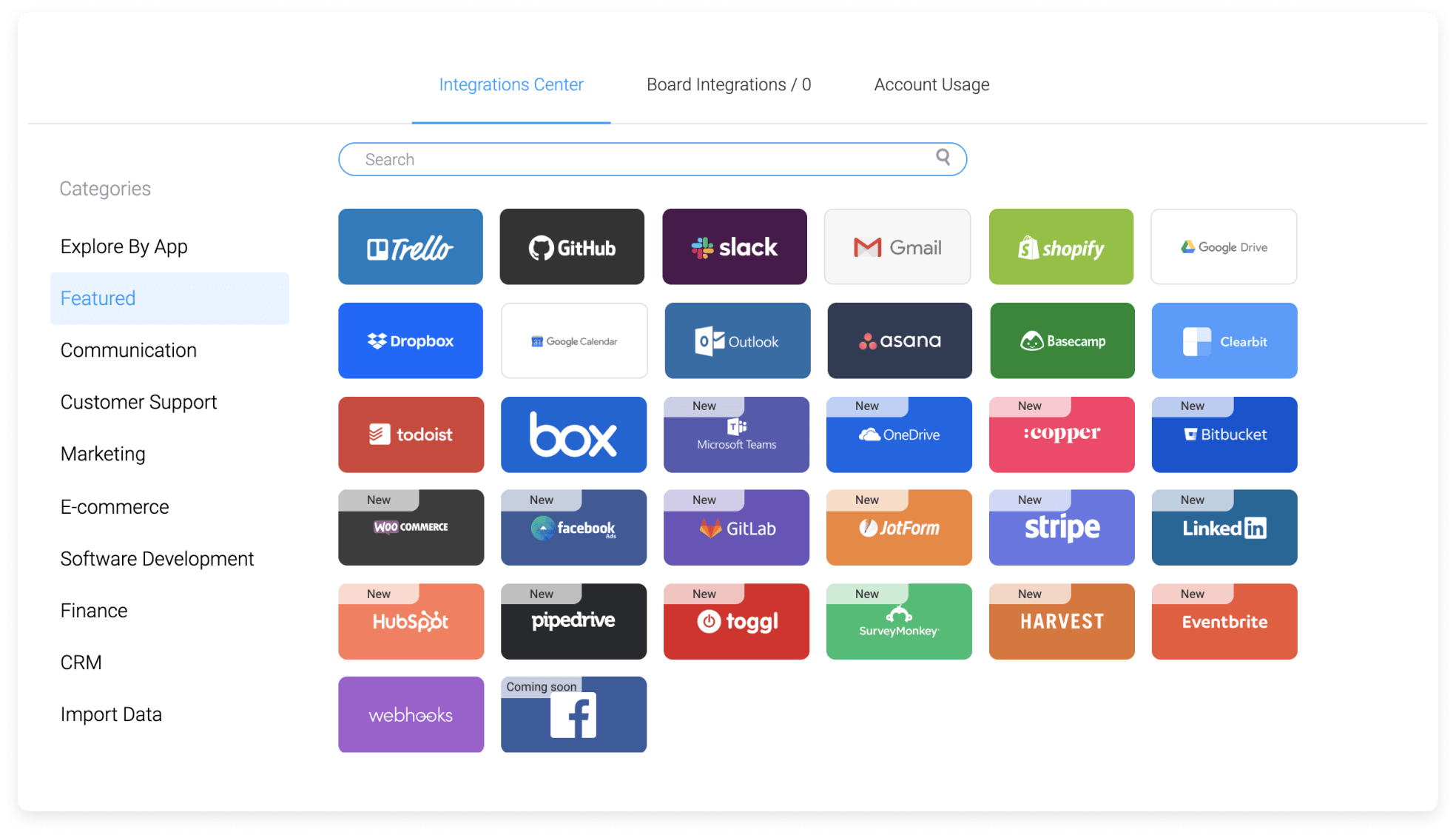
#4. Increase organization-wide transparency
With monday.com, everything is hosted in one place. It’s easy to see who’s doing what, how far along things are progressing, and what resources you have available.
For this reason, it’s a pretty nifty way to manage your gap analysis. You’ll easily be able to conduct your analysis, comparing what’s happening so far with what needs to happen going forward. No need to trawl through endless documents or paperwork — it’s all there in one place.
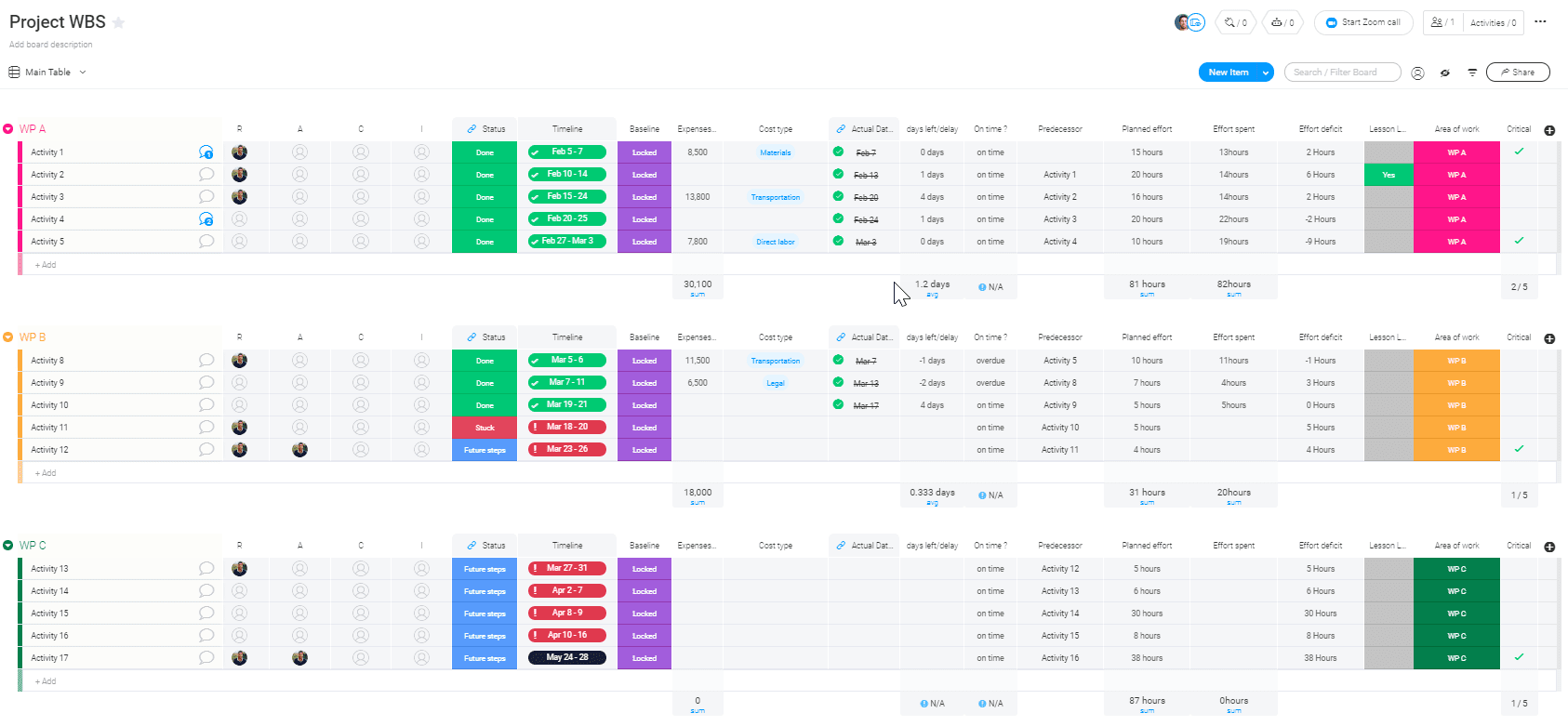
Ready to perform your first gap analysis?
By now, you’ve got all the information you need to perform your first gap analysis. No need to thank us — you’re more than welcome.
As a result of this newfound knowledge, you’ll be able to make sure you’re making the most out of your next gap analysis.
Whether you’re doing it for the first time — or looking to improve the process you’ve been using for the last 10 years — this article should’ve given you all the information you need to maximize your gap analysis efforts.
And don’t forget — if you want to make the process quicker — you can use monday.com’s gap analysis template to get things moving as fast as possible. We’re not saying it’ll provide you with a successful gap analysis, but it sure will help you get there.

